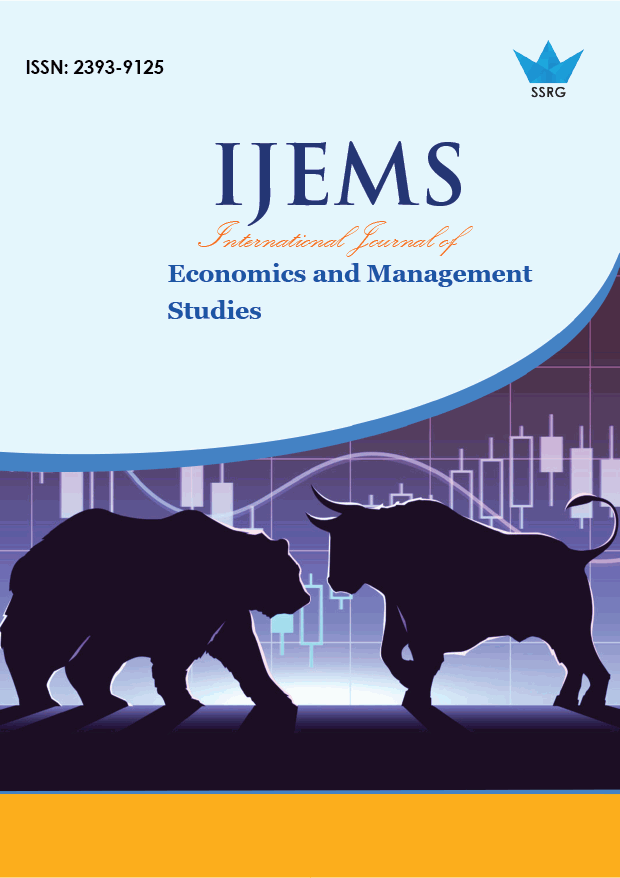Competencies of Teachers in Relation to the Level of Implementation and Problems of Physical Education Activities in the University of Eastern Philippines System

| International Journal of Economics and Management Studies |
| © 2019 by SSRG - IJEMS Journal |
| Volume 6 Issue 1 |
| Year of Publication : 2019 |
| Authors : Paulina s. Benzon |
How to Cite?
Paulina s. Benzon, "Competencies of Teachers in Relation to the Level of Implementation and Problems of Physical Education Activities in the University of Eastern Philippines System," SSRG International Journal of Economics and Management Studies, vol. 6, no. 1, pp. 135-142, 2019. Crossref, https://doi.org/10.14445/23939125/IJEMS-V6I1P116
Abstract:
This study is focused on determining the competencies of P.E teachers in relation to the level of implementation and problems of P.E. activities of the University of Eastern Philippines’ system. Particularly, it sought to know the profile of the P.E. teachers of the University of Eastern Philippines in terms of age, gender, civil status, educational qualification, years in teaching P.E./coaching sports, in-service training on sports, and scholarship grants; determine the level of its implementation program on the extent to which objectives were being attained, implementing strategies, extent of implementation of sports activities, adequacy of sports equipment, availability of sports facilities, problems encountered; found out if there was a significant relationship between the profile of the P.E. teachers towards the P.E. activities implementation, and find out if there was a significant difference among the three campuses of UEP in the implementation of the P.E activities. Purposively selected as the respondents were P.E. teachers of this study. A set of questionnaires was the primary data gathering tool. The collected data were collated, tabulated, and analyzed using frequency counts, percentages, means, ranks, multiple regression analysis, and t-test. Based on the findings of this study it arrived at the conclusion that the P.E. teachers in the three campuses of the University of Eastern Philippines are young, male, married, a Bachelor’ degree holder with M.A. units, with an average of 3.29 years in teaching PE and 6.32 years in coaching sports; and had attended more than one in-service training. On sports despite non-grantee of scholarship from any sources. “Fully attained” was indicated on the implementation of the objectives of P.E. activities of the UEP system with the expression of ideal, hope and aspiration of students through athletics and sports activities was satisfactorily attained. Generally the overall strategies in the implementation of P.E. activities was poor although it satisfactorily utilized filed demonstrations. In terms of implementing the sports activities, volleyball, badminton, table tennis, running events in short, middle, and long distance, and discus throw tended to be a little above moderate implementation. The adequacy of sports equipment was “moderately adequate” showing “highly adequate” in badminton and volleyball paraphernalia. The availability of sports facilities was generally “often available.” However, were as “always available” included sports facilities such as basketball court, soccer/football filed, and volleyball court. Swimming pool and boxing ring were not available. The leading problems encountered towards the implementation were lack of in-service training for all P.E. teacher and coaches; and inadequate supply of sports equipment. The study did not establish a significant relationship between the P.E. teachers’ profile and the level of implementation of P. E. activities. Comparison between the three campuses of the University of Eastern Philippines revealed no significant difference in the levels of implementation of the UEP P.E. activities. It is recommended that logistical support in terms of manpower development be initiated by the administration. Variables such as the factors to enhance participation of concerned individuals be included in subsequent studies.
Keywords:
competencies, teachers, implementation, problems, relation, system
References:
[1] Ajzen, IcekAttitudes, Personality, and Behavior. Milton Keynes: Open University Press, 1998.
[2] Anderson, D. The Discipline and the Profession. Foundations of Canadian Physical Education, Recreation, and Sports Studies. Dubuque, IA: Wm. C. Brown Publishers, 1989.
[3] Anderson, L.W. and Krathwohl, D.R. A Taxanomy for Learning Teaching and Assessing. New York: Longman Press, Inc. 2001
[4] Bandura, Albert. Self-efficacy: The Exercise of Control. New York: W.H. Freeman and Company, 1999.
[5] Broto, Antonio S. Simplified Approach to Influential StatisticsMandaluyong: National Book Store, 2007.
[6] Corbin C.B. and Lindsey, R. Firness for Life (4thed.). Glenview, IL: Scott, Foresman and Company, 1999.
[7] Destura Pedro D. and Rolanda A. Delorino. Charting the development Path of a Higher Education Institution: the UEP Experience. (Manila: Melbros Printing, Inc. 2004.
[8] Good, Carter V. Dictionary of Education. University of Cincinnati, Mcgraw-Hill Book, Co., 1978.
[9] Heyward, Vivian H. Advanced Fitness Assessment and Exercise Prescription. New York: Amazon Prime, 2000, p. 126.
[10] Miller, Katherine. Communication Theories: Perspectives, Processes, and Contexts. New York: McGraw-Hill, 2005.
[11] Pangrazi, R.P., and Darst, P.W, Dynamic Physical Education for Secondary School Students: Curriculum and Instruction (2nded). New York, New York: Macmillan Publishing Company, 2001.
[12] Rue, Leslie and Llyod L. Byars, Management: Skills and Application. Richard Irwin, Inc. International Student Edition, USA, 1990.
[13] Webster Dictionary (Geddes and Grosset David Dale House. New Lanark MLII) DJ Scotland, 2006.
B. Journals, Periodicals, Magazines

 10.14445/23939125/IJEMS-V6I1P116
10.14445/23939125/IJEMS-V6I1P116